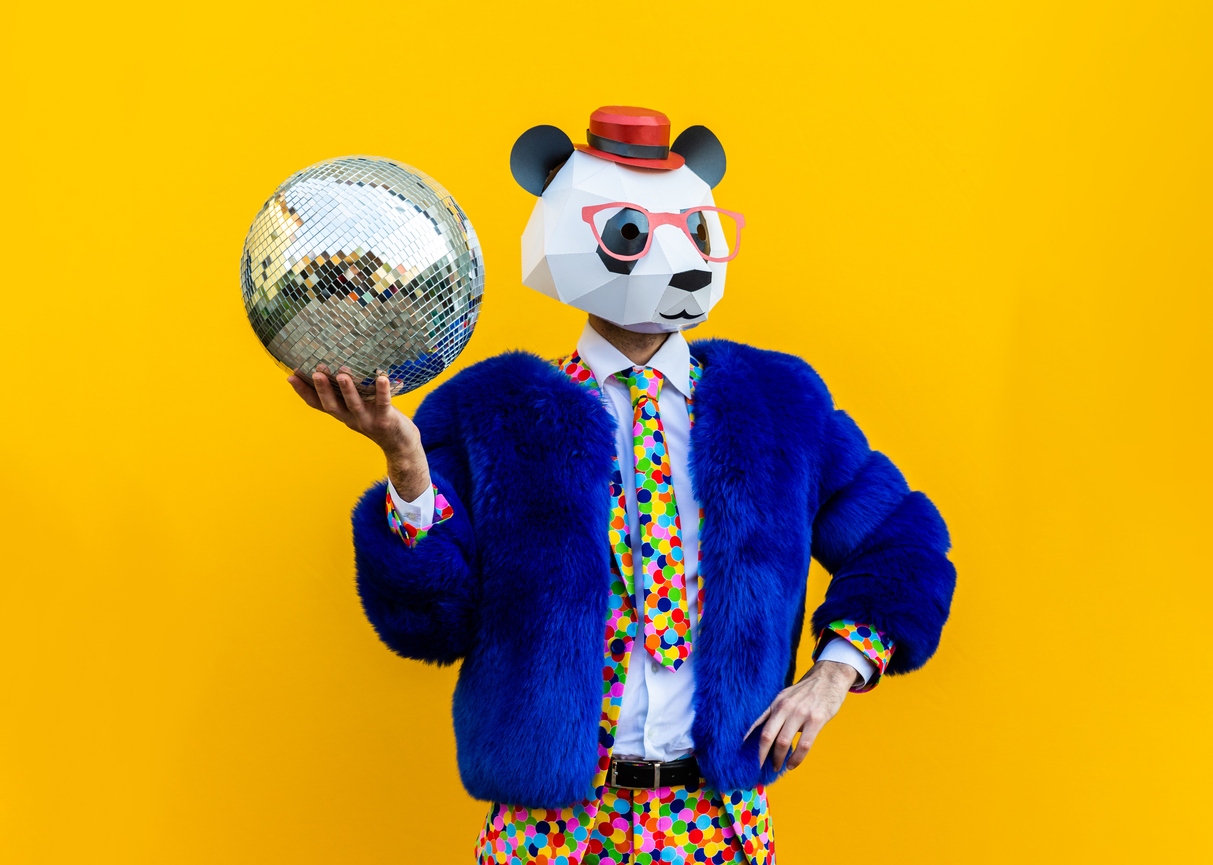One of the fundamental elements of a successful business is a clear brand persona. While a business can succeed to some extent with hard-working employees, top-quality products and services, and an overall enjoyable customer experience, your brand must have a defined identity. Otherwise, people will struggle to understand and recall what your brand is all about.
In this guide, we’ll go over what a brand persona is and how you can create one that best represents your business.
What Is a Brand Persona?
A brand persona, as the term would suggest, personifies a brand as if it were an individual rather than an entity. A strong brand persona would give the brand a face, along with a voice and specific core values that align it with its audience. In developing a brand persona, you must consider a variety of elements that compose it, including a human name, interests, hobbies, wants and needs, and pain points. In the process, you can create a defined personality that people associate with your brand, making it more memorable and attractive to potential customers.
Brand personas ultimately help promote consistency across the organization, communicating to all internal teams how your brand should come off and giving them guidance around messaging and creative elements. At the same time, customers will feel as if they truly understand you and what value you bring to them.
What to Consider When Developing a Brand Persona
When creating a brand persona, there are several key elements you must keep in mind to help guide your efforts. These include:
Customer Demographics
Generally, your brand persona should reflect that of your customers. If you want to establish a specific persona for your brand that resonates with your audience, you must first understand your audience. In this way, you can connect your brand persona to your buyer personas.
Like a brand persona, a buyer persona entails creating a fictitious representation, putting a single face to a particular audience segment. Buyer personas will consist of different traits based on your audience segments. For instance, you might have buyer personas that represent students while another represents new parents.
As you develop buyer personas, you’ll want to consider different demographics that help define each persona. These demographics will include your customers’ location, age, gender, occupation, daily routine, hobbies, needs, and the problems that they face that you can help resolve. Once you’ve used these to develop buyer personas for each audience segment, you can essentially combine them to help define your brand persona. Think of the kind of person all of your audiences would want to turn to to help resolve their pain points—that’s the person people should think of when they encounter or recall your brand. You can use the Hubspot Make My Persona tool.
Thematic and Visual Consistency
In helping maintain a solid persona, you need to make sure your brand is consistent across all platforms. All logos, color schemes, and general themes should make it instantly clear which brand is behind them. In the process, customers and prospects will come to recognize your brand and its unique persona. Otherwise, having inconsistent creativity and messaging, along with disorganized or overall unclear themes, will make you more forgettable and less trustworthy to audiences.
How to Build Your Brand Persona
Keeping these key considerations in mind, you can begin developing your brand persona by taking the following steps:
Determine Your Brand’s Personality Traits
The first step to take toward creating a brand persona is to select the top five personality traits that describe your brand. There are many words you could use to describe your brand’s personality, from friendly and knowledgeable to trustworthy and innovative.
To help you settle on some specific descriptors, you can consider the dimensions of brand personality based on Jennifer Aaker’s essay on the subject, in what she calls the “Big Five.” These are as follows:
Excitement
Brands that come off as exciting are cutting-edge and aren’t afraid to explore different ideas and concepts. They often come across as imaginative and willing to change things up if needed.
Sincerity
Oftentimes, these brands appear to be down-to-earth and approachable. More sincere brands may place emphasis on being family-owned, small town-oriented, or dedicated to handmade production.
Sophistication
Brands that exhibit sophistication appeal more specifically to class and luxury. While they may sell luxury products from jewelry to designer clothing, they may also sell a particular aspirational lifestyle that appears exclusive to their customers.
Competence
A brand appears competent if it offers unparalleled security and reliability. Competent brands will show that they know how to do what they claim to be able to achieve.
Ruggedness
Rugged brands tend to focus more on a lifestyle centered around the outdoors and general toughness.
Identify the Role Your Brand Plays in Relation to the Customer
As discussed, your buyer personas can help you understand your customers and their specific roles, including what they want from your products or services. Using this knowledge, it’s time to determine where your brand fits into the puzzle. What kind of relationship does your brand have with your audience?
For example, your brand could function as a:
Leader
A leader is someone who serves as a role model that people look up to for advice and turn to for guidance. Leading brands give customers a clear direction in which to go to help resolve the issues they’re facing.
Curator
A curator is someone who appears to have plenty of knowledge about what’s available, including which places to visit that can give people what they want or need.
Nurturer
The nurturer is someone who will lend an ear to people and truly listen to them, giving them company in a time of need.
Adventurer
Adventurous businesses are free spirits who exhibit a spontaneous nature and an eagerness to try new experiences. This brand would match the brand dimension of “excitement.”
Lay Out the Details of Your Brand Persona
Once you’ve figured out what traits define your brand and the role it serves in relation to customers, you can begin building a profile for your persona.
The following are some core elements to include:
Your Persona’s Name
While you may think of the company name as the name, keep in mind that this isn’t the name of a person. Instead, for a brand persona, come up with an actual human name that’s easy to remember while personifying your brand.
The Face of Your Brand
It’s important to be able to put a face to a name, which you should do for your brand persona’s name. Choose a picture of a person to represent your persona in lieu of your logo.
Your Persona’s Age
Consider the audience you’re targeting and their general age, which is around where your persona’s age should be.
Your Persona’s Interests
Outside of business, think about what types of activities your persona would engage in, whether it’s sports, reading, or another activity that’s akin to what your audience would do. Additionally, think about specific likes and dislikes that your persona might have, including favorite food items, movies, or musicians.
Bio
Develop a short bio describing your persona and what it’s about, essentially relaying the persona’s life story.
Create a Consistent Theme on All Platforms
With a clear persona in mind, you can now incorporate it into your brand on every platform, including your website, social media channels, and apps.
To start with, carefully select color schemes that match your brand persona and the type of personality you want to present. Do you want your brand to come across as energetic and fun? Warmer colors like red and orange will help convey this attitude. Meanwhile, blue and purple imbue trustworthiness and sophistication, respectively.
In addition, your messaging should complement visual elements. Think about the kind of language you want to use to communicate with customers. You might want to use more formal language if you’re going for an authoritative and knowledgeable tone. On the other hand, excited and conversational language can keep audiences engaged and disarm them.
When launching social media marketing campaigns on platforms like Instagram, you’ll also want to stick with a particular theme. Consider what kind of content your persona would post and make sure all posts are aligned with it. You can also look at what competitors are doing to maintain healthy interactions with their audiences and take cues from them.
Regardless of what you choose for your visuals and messaging, make sure they’re just as defined and well-communicated across teams as your persona to maintain consistency.

Develop a logo that reflects your brand persona
Create a Logo That’s Memorable and Attributable to Your Persona
If you haven’t already designed and developed a logo, create one that tells people everything they need to know without actually saying anything. That logo should convey the emotions behind your brand and elicit a desirable response from audiences. Even if you’ve created a logo, you can make tweaks over time as you rebrand and continue to develop as an organization.
Connect with Audiences Through Your Brand Persona
After investing enough time and effort into your brand persona, you’ll have a tool that can help you thrive with your branding. You’ll be able to use that persona as a roadmap to guide all marketing and sales materials, along with direct customer communications.
If you require any additional help with your branding and marketing, particularly with mobile marketing, App Samurai is here. Using the App Samurai mobile growth platform, you can benefit from increased user acquisition and mobile marketing efforts that connect with users across all devices. Get in touch with us today to learn more about this platform and what it can do for your business alongside your brand persona.




